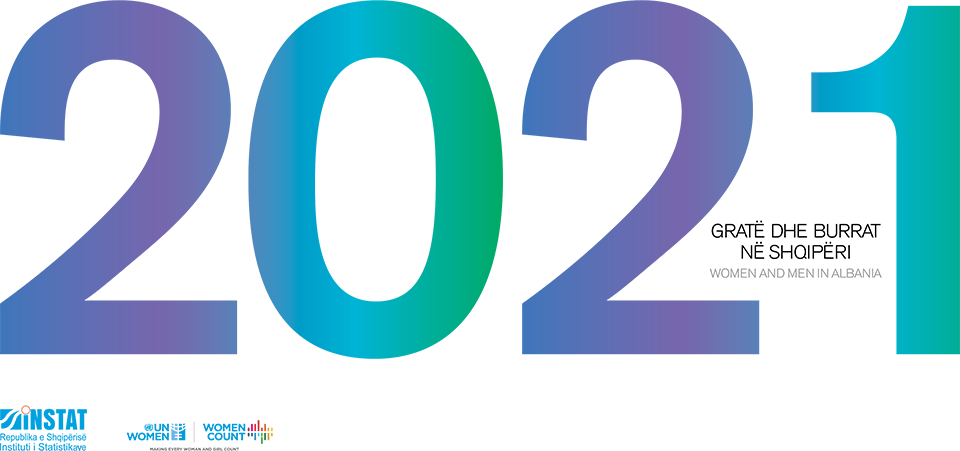“Women and Men 2021”– an overview of gender developments in Albania
Date:

2 July 2021 - “Women and Men in Albania 2021”, published by the Albanian Institute of Statistics (INSTAT) with the support of UN Women’s Making Every Woman and Girl Count programme provides the latest collection of gender statistics in the country. It features sex-disaggregated data on population, health, education, employment, decision making, social protection, crime, and human rights.
Now in its sixth consecutive year of publication, “Women and Men in Albania” has increasingly expanded the body of available gender statistics in the country. This year, for example, the report includes for the first time sex-disaggregated data in higher education, such as student enrolment and graduation by course of study and gender composition of academic staff in public and private universities. The data collected reveal gender differences at various levels of education, with more boys attending preuniversity education compared to girls, whereas girls make up 60.4 % of the total number of students in higher education.
In the area of labour market and social protection, the present publication includes for the first-time indicators such as: registered unemployed jobseekers in receipt of economic assistance or unemployment benefits, number of social centers for the elderly in need and the number of beneficiaries in such centers, as well as data on the gender pay gap by age and monthly incomes by gender.
The Report confirms that employment rate remains higher for men (77.1 %, compared to 61.2% among women) while 22.8% of women are engaged in unpaid work in the family business, compared to 13% of men. In addition, 12% more men than women are self-employed.
The data collected also show that women remain outside the labour force mainly because they are engaged in unpaid work at home (18.8 %) or are attending school (20.9 %). On the other hand, only 0.6% of men mention household duties as the reason for their inactivity while 25.7% of inactive males are students or pupils.
The report indicates that the number of men who engage in unhealthy behaviours such as smoking, and alcohol consumption is much higher than that of women and the vast majority of both men and women never exercise (77% and 82% respectively). In the area of personal safety and security, data show that 88% of domestic violence victims are women, an increase by 20% over the past five years.
“Every year, the publication integrates the Minimum Set of Gender Indicators and Gender Inequality Index indicators. The 52 gender indicators were set by the UN Statistical Commission in cooperation with UN Women for the measurement of gender indicators that serve to compare gender data internationally”, said gender statistics expert Ani Plaku.
“Women and Men in Albania is a key flagship publication that helps the understanding of the differential impact of development challenges on women and men. It provides essential evidence for decision makers to better integrate gender perspectives in policies and strategies, and to strengthen the country’s implementation of the Sustainable Development Goals”, says UN Women Country Representative Michele Ribotta.
UN Women's support to INSTAT with the publication of this periodical is of particular importance in addressing Sustainable Development Goal 5, the achievement of gender equality and the empowerment of all women and girls.